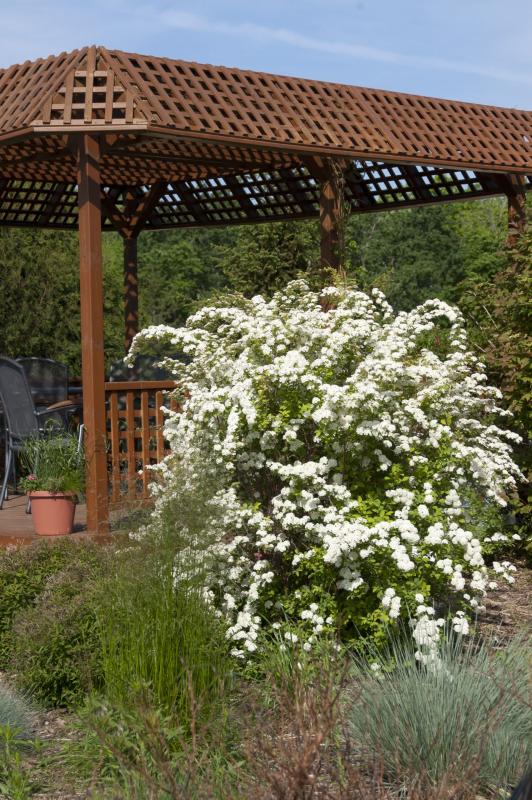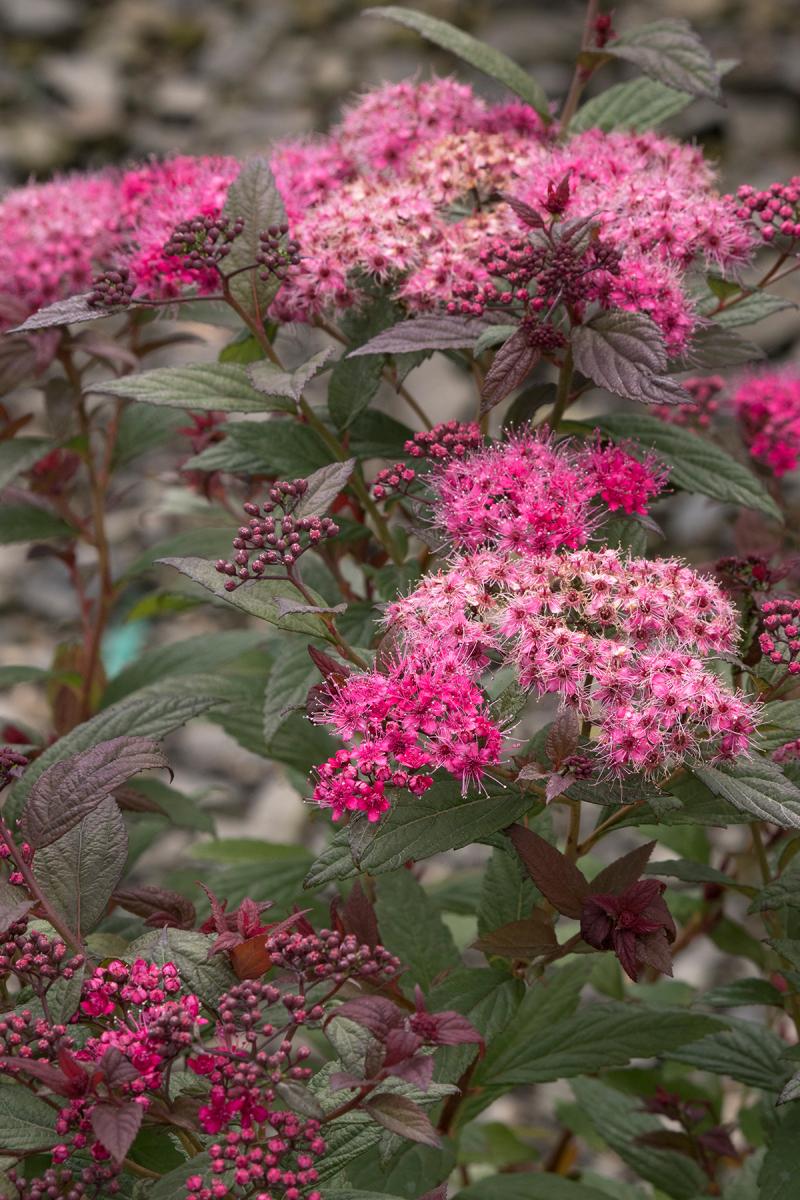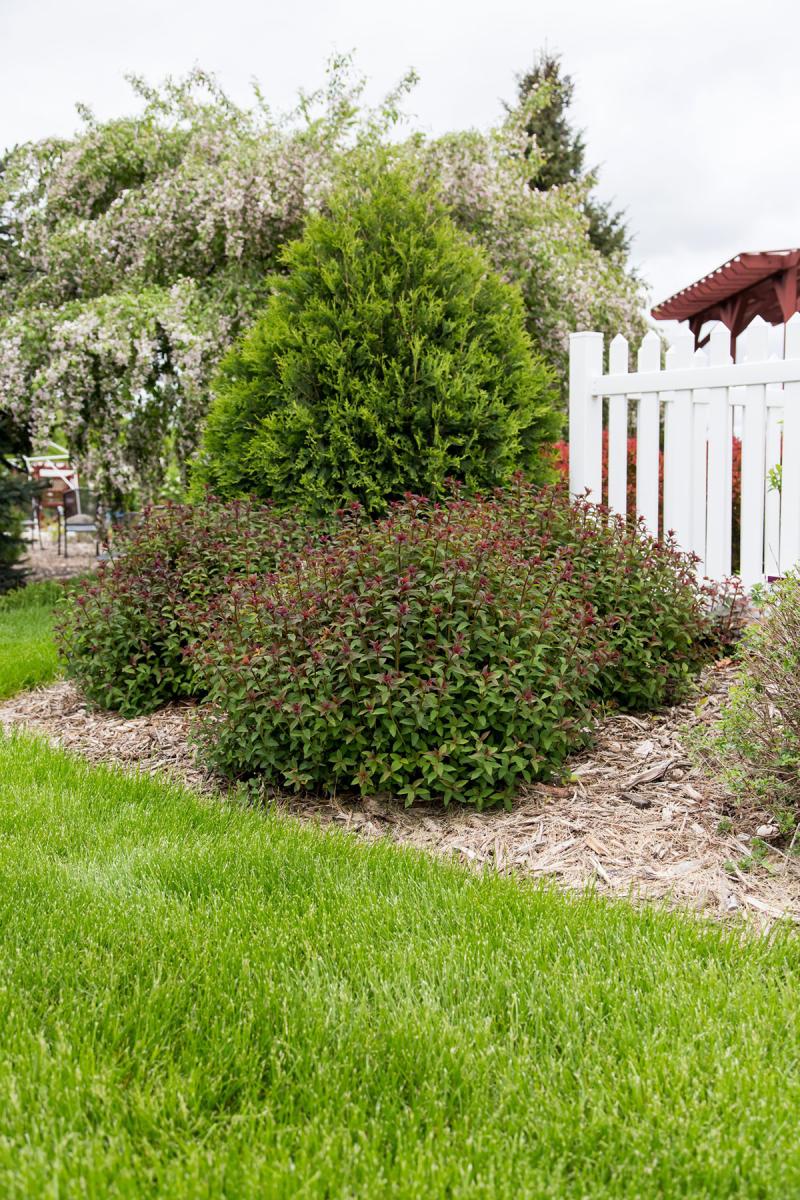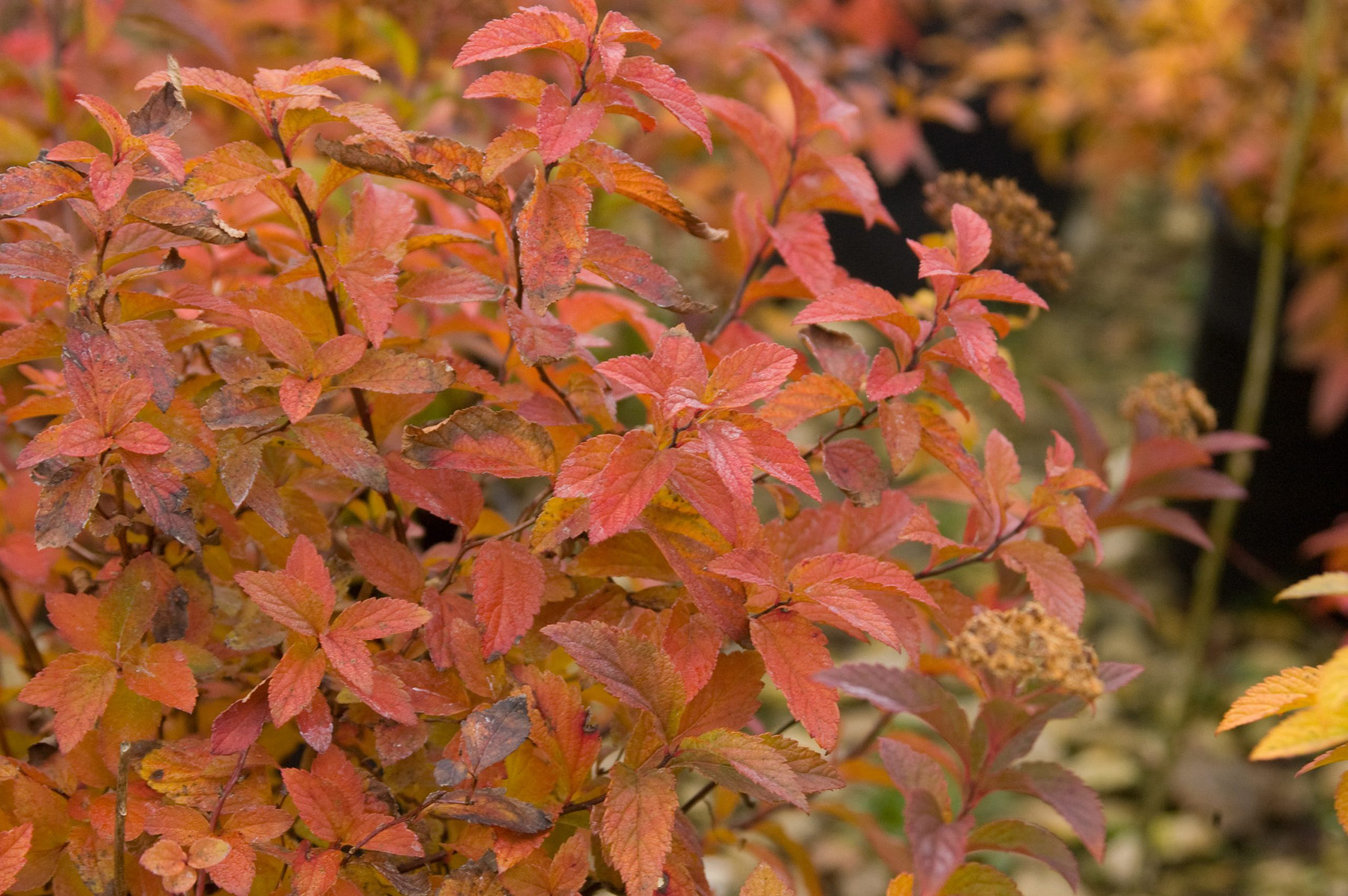
For 2023, the National Garden Bureau’s shrub of the year is Spirea, which unfortunately often gets overlooked during the spring buying-rush as old-fashioned and uninteresting. In reality, spireas are tough, easy-to-grow shrubs and a workhorse in modern landscapes.
Spireas offer a wide range of colorful foliage ranging from blue to yellow, red to orange, and every shade of green in-between. A wide range of plant sizes and habits, as well as many flower colors, are additional reasons to reconsider these great shrubs.
Their beautiful flowers are attractive to butterflies, bees and other pollinators. But they are not a preferred food for wildlife, such as deer or rabbits.
Common Spirea Types
There are nearly 100 unique species within the Spirea genus, but only a few are commonly found in the nursery industry. Still, there are many cultivated varieties (cultivars) to choose from, one to suit any home landscape or garden. Below are a few notable selections, but if you can’t find these specific cultivars there are many more to choose from at your local garden center.
Bumalda spirea, Spiraea x bumalda - similar to Japanese spirea, they are a cross between Spiraea albiflora and Spirea japonica. Flower colors range from white to deep pink.
 Dolchica – graceful dark mounds hold showy purplish flower clusters. Height 3’. Spread 4’.
Dolchica – graceful dark mounds hold showy purplish flower clusters. Height 3’. Spread 4’.- Superstar® – a plant with true three-season appeal thanks to its stunning, scarlet red new growth in spring, its pink blossoms May-August, and its excellent bronze fall color. Height: 2-3’. Width: 3-4’.
Birchleaf spirea, Spiraea betulifolia - known for their larger, blue-green, birch-like leaves and stunning fall color.
- Glow Girl® Birchleaf – a great plant for those who need easy, adaptable color for colder climates due to its lemon-lime foliage. Height: 3-4’. Width: 3-4’.
- Pink Sparkler™ Birchleaf – a pink birchleaf selection that blooms in early summer and then again in autumn, when new flowers appear for a pop of color late in the Height: 3-4’. Width: 3-4’.
- Tor Birchleaf – a compact mound of dark, gray-green, birch-like leaves that sport tiny white flowers in late spring. Also boasts amazing fall color. Height: 3-4’. Width: 3-4’.
Japanese spirea, Spiraea japonica - known for their wide flower and foliage color range, and their low-growing, mounding form. 
- Double Play Doozie® – makes a great landscape statement with its constant red blooms that show all summer long. Height: 2-3’. Width: 2-3’. (Other Double Play varieties are Big Bank, Artisan, Candy Corn, Gold, and Red)
- Goldflame – a dense, upright mounded shrub with bronze-tinged new growth in spring. Height 3-4’. Spread 4-5’.
- Little Princess – showy flat-topped clusters of bright pink flowers bloom in early summer. Height 2’. Spread 3’.
- Little Spark® – a compact spirea with orange new growth that holds its yellow leaves throughout the summer, even in full sun. Height: 18-24”. Width: 18-30”.
- Rainbow Fizz™ – a burst of color with candy-like buds that emerge red, opening to pink. Height: 3-4’. Width: 3-4’.

Korean spirea,- Spiraea fritschiana - native to forests, slopes, and rocky areas and, like most spirea, attractive to butterflies.
Vanhoutte spirea, Spiraea x vanhouttei - known for their vase-shaped habit, flowing, arching branches and cascading showy spring blooms.
- Firegold® –brilliant lemon-lime foliage, resembling bridalwreath spirea, that arches gracefully with lovely white blooms adorning the plant. Height: 4-6’. Spread: 5-7’.
- Snowmound – easy to grow with graceful, spreading branches and an abundance of white flowers. Height 3-5’. Spread 3-5’. Botanically known as S. nipponica ‘Snowmound’, but a superior replacement for the original Vanhoutte spirea.
Growing Spirea
Choose a sunny location so plants stay more compact and develop a good show of flowers. Plants in shadier location tend to become taller and open, with fewer flowers. Plants also flower better when provided adequate moisture throughout the year.
Spireas tolerate poor soil, but will do their best in friable (loose or non-compacted), well-drained soil. Avoid continuously wet locations. After planting, provide regular water during the first year so plants develop a good root system and can become well-established. Once plants are established, they are fairly drought tolerant. Mulching with wood chips or shredded bark will help retain soil moisture.
Prune plants as needed after flowering. Two to three years after planting, begin thinning the center branches of tall spireas by removing 1/3 of the thickest stems as close to the ground every year. Smaller spireas can be pruned as needed for shape and size, or to remove dead stems each year. Periodically, they can be pruned to the ground in fall or spring to clean up overgrown plants.
Spireas are fast growing shrubs, making them highly desirable for quick fill-in plantings, massing, hedges and foundation plantings. They are hardy to USDA Hardiness Zone 4.
For more information on this year's featured plants, visit the National Garden Bureau. www.ngb.org. The National Garden Bureau recognizes and thanks First Editions Shrubs & Trees from Bailey’s Nursery, an NGB member, as author and contributor to this fact sheet, which is provided as an educational service with no limitations on its use.
All images from the National Garden Bureau. Feature image: 'Firegold' Vanhoutte spirea. Developed by First Editions, Bailey Nursery.
- 'Plumtastic' Spiraea japonica. Developed by Monrovia Nursery.
- 'Superstar' Bumalda spirea summer foliage color. Developed by First Editions, Bailey Nursery.
- 'Superstar' Bumalda spirea fall foliage color. Developed by First Editions, Bailey Nursery.